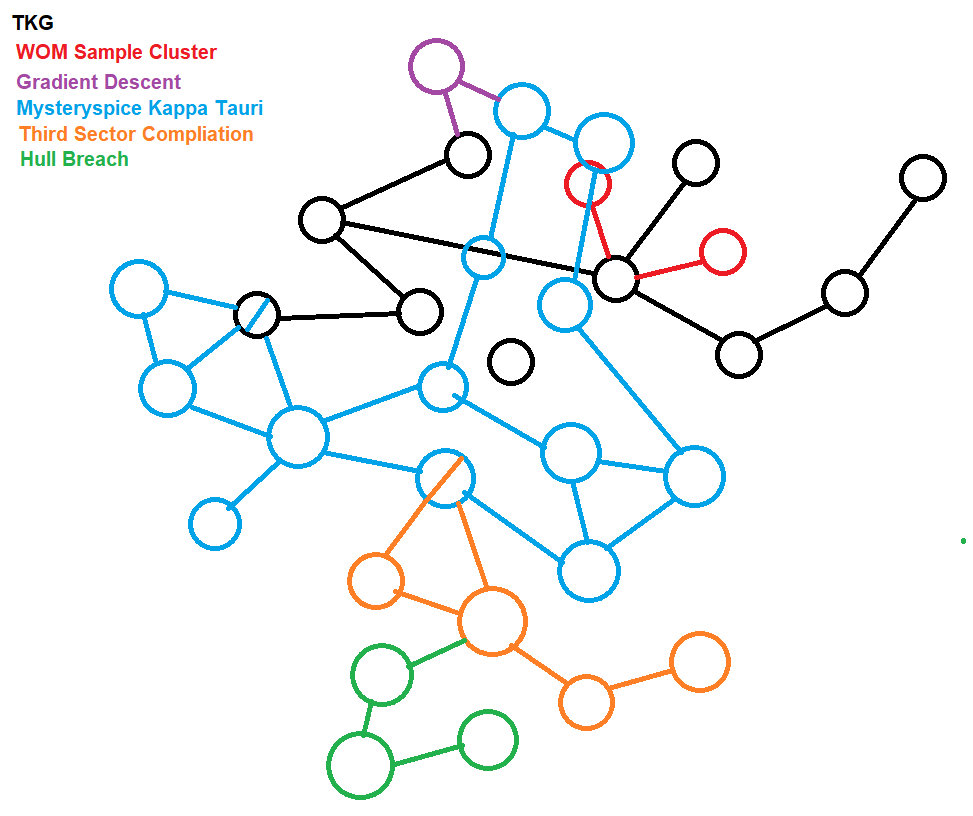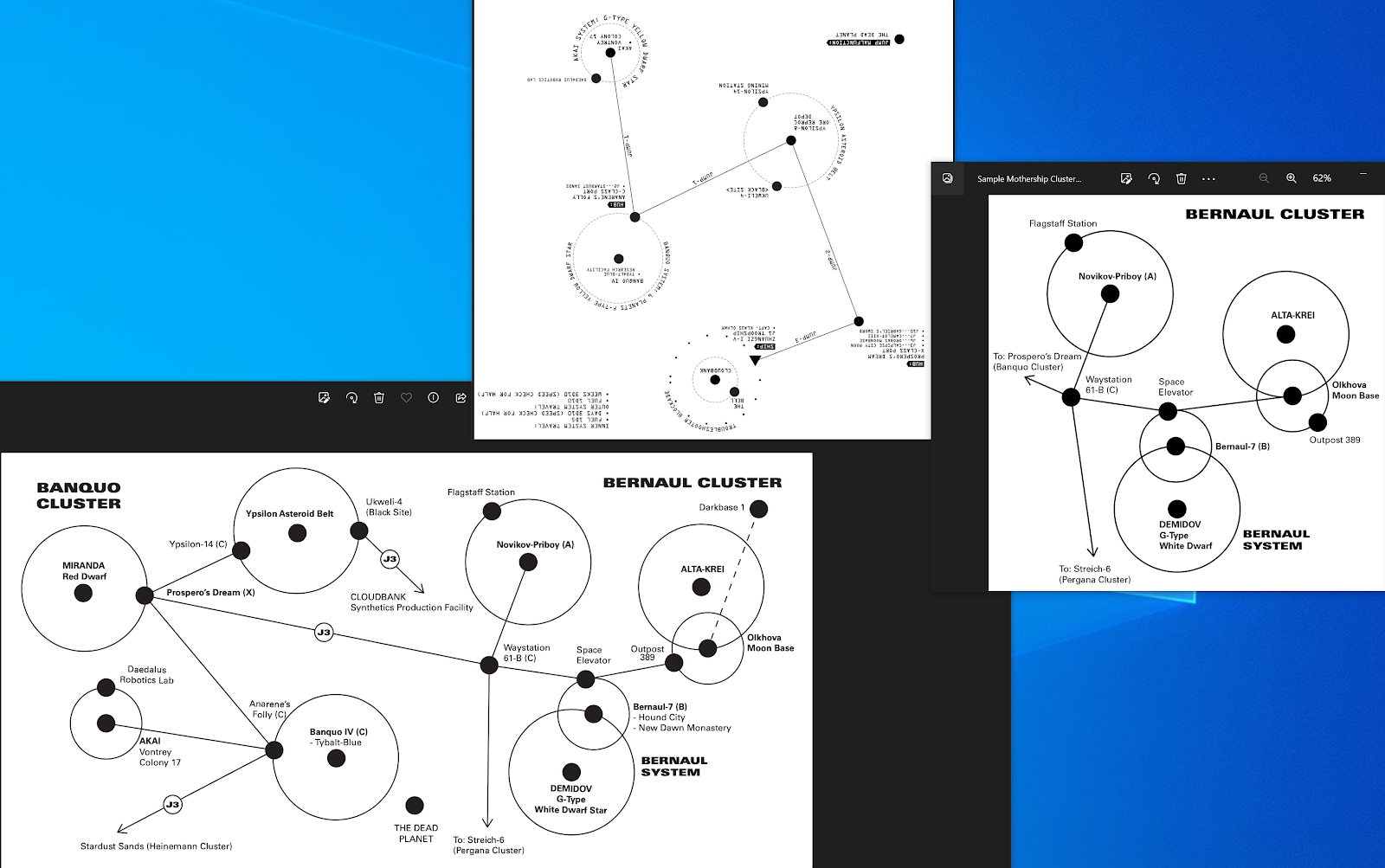Mothership is fundamentally a work of Anti-Canon. That is there is no fixed setting except for what is in the text for any given product and it is up to the Warden to chain it together into their own setting. However, enough products link back on each other to create a semi-canon. Mostly referencing off the official modules produced by Tuesday Knight Games.
To make a
map from this requires two ways, one more in depth than the other. The first step
is a close reading of the module to find out what assumption it makes; what
other planets or background elements are referred to and how it implies they
fit together (i.e. is something portrayed as isolated or distant). Beyond that,
is when you dig through the author(s) blog(s) or Discord comments and see what else they have
created or even one-off comments about some home game that might link two
published modules together.
Easiest is when the author adds their own map. Then it becomes a matter of sticking
it somewhere or sticking modules around it. Like any analytical study, this separates
into lumpers and splitters.
Lumpers
assume that with the vast scale between planetary systems and sectors, many modules
can occur within the same system, hidden among the rings of gas giants and
asteroids. The most prime, if not Mothership example being Columbia Game’s High
Colonies. Splitters have modules and scenarios scattered in their own systems, potentially
up to one for each.
A common
way of lumping things together is to do it by author. If all of Tuesday Knight
Games modules are about exploring a small section of space, then each author
could be exploring their own. If there are multiple authors though, that’s a
great excuse for a link, or you just have to make a choice between separating
them out.
Blogs can
be tricky. A reference might be to a home game, changed for release or discarded
as a thought. Or their own changes not reflected in the modules but put in themselves
and if you just blindly copy, then your connections won’t make sense. You are
doing the equivalent of rehashing twice.
Let’s look
at a few of my worked examples
This one was made by cramming modules whenever I felt like they should fit, including non-Mothership ones and eventually by the method listed above. It’s a total mess of distances and regions, the only consistent thing is trying to keep four systems per cluster, like in the sample ones from the Warden operations Manual. But even then, that is listed as just an average. I won't even try and list all the systema dn modules, the map has been on hold until more infomation about a critical area droips via Kickstarter. And at least one has gone dark.
Anodyne is another 3rd party publishing group, which pulled seevral non-associated 3rd party modules into a single cohesive map calle the Third Sector. While it doesn't innately link to their own Inferno Trilogy, the option is left to the Warden. Hull Breach by the same connects by the simple fact that I asked if it did and got a possible location.
On a side note, I normally pop Anodyne's Picket Line Tango over in the Third Sector's Alpha-Omega system.
So the map is really the following, stiched together:
Now for the wider area, we get a little fuzzier. There is a lot of promised Mothership material which may never come to pass. Endlessly promised, churning through Kickstarters and being delayed or abandoned. Most of it is one-shots, with a few really big pieces or collaborations. All this can be perrused for links and combined. To a certain extent, the deliberte anti-canon means imagination must be needed and for many, imagination is all that is needed.
You can see here that some areas link when they give no indication in the text that they do. That can be because the authors have published side-products that assume they must be close by, or 3rd-Party products which create links. Like how Space Penguin Ink's Distress Signals adds several links between Tuesday Knight Game's area and Silver Arm Game's Mani system.
With the assumption of hidden or proprietary jump routes, you are feel to link up however you want as new infomation comes to light. But building a universe out of parts that are already there helps string things along naturally and gives the players a cohesive space to play. nd not just a series of disconnected scenarios.
The benefit of anti-canon is that any approach, not just what I outlined works.








No comments:
Post a Comment